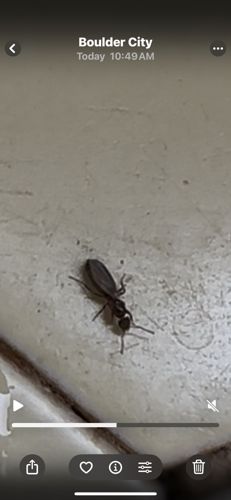Winged Ant (Alate)
Scientific Name: Formicidae (subfamily) alate
Order & Family: Order: Hymenoptera, Family: Formicidae
Size: Varies significantly by species, typically 3-20 mm for winged forms.

Natural Habitat
Ants are found in nearly all terrestrial habitats worldwide, ranging from forests, grasslands, and deserts to urban environments. Their nests can be underground, in wood, under rocks, or within structures.
Diet & Feeding
Ants have a diverse diet depending on the species. Generalist ants often feed on sugars (nectar, honeydew from aphids, fruit), proteins (dead insects, other arthropods), and fats. Some species specialize in seeds, fungi (fungus-growing ants), or even other ant species.
Behavior Patterns
Ants are social insects that live in colonies, which can range in size from a few dozen to millions of individuals. They exhibit complex social behaviors including division of labor (queens, males, workers), communication through pheromones, and building elaborate nests. Winged ants, like the one pictured, are typically reproductive males and females (alates) that emerge from the colony for their nuptial flight to mate and establish new colonies. This usually happens during specific times of the year, often after rain.
Risks & Benefits
Risks: Some ant species can be nuisance pests in homes, contaminating food or damaging structures (e.g., carpenter ants). Certain species, like fire ants, can inflict painful stings. Benefits: Ants play crucial roles in ecosystems, including soil aeration, seed dispersal, nutrient cycling, and as predators controlling populations of other insects. They are also an important food source for many animals.
Identified on: 8/9/2025